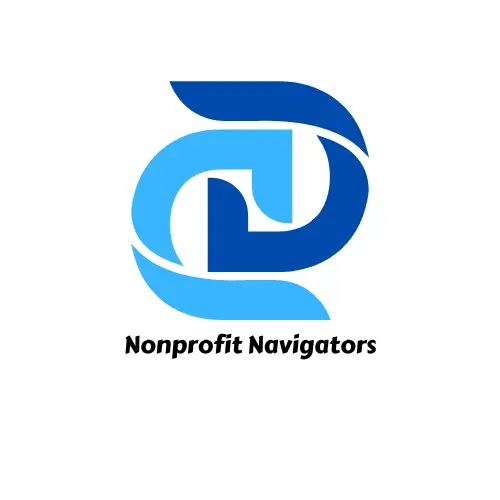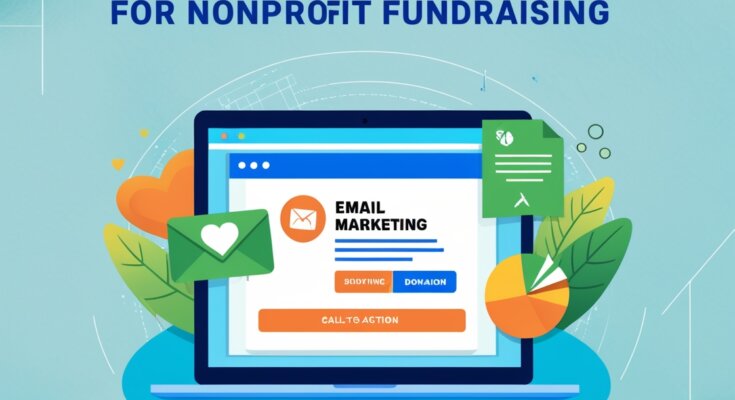Email marketing is one of the most powerful tools available to nonprofits, but it’s often underutilized. It has become a game-changer for nonprofit organizations looking to boost their fundraising efforts.
How to Use Email Marketing for Nonprofit Fundraising is a crucial topic that can transform your nonprofit’s ability to reach new donors, engage existing supporters, and drive meaningful contributions.
If you’re a nonprofit looking for ways to boost donations, create lasting relationships, and build a stronger community around your cause, email marketing should be at the top of your list.
Why Email Marketing for Nonprofits?
Before diving into strategies, let’s talk about why email marketing is such an essential tool for nonprofit fundraising. Unlike social media or other marketing channels, email marketing offers the unique ability to reach people directly in their inbox.
According to studies, email marketing generates 42 times more return on investment (ROI) than any other digital marketing channel. This means that for every dollar you spend, you get $42 back—sounds like a great deal, right?
In addition, email marketing allows you to build a relationship with your supporters over time. With each message, you can personalize your content, segment your audience, and track responses, giving you insights into what works best. The best part? It’s cost-effective and highly scalable, making it ideal for nonprofits with limited budgets.
Now, let’s take a closer look at the strategies you can use to leverage email marketing for successful fundraising.
- Build and Segment Your Email List
A good email list is the foundation of any successful email marketing campaign. But it’s not just about how many emails you have on your list—quality matters more than quantity. It’s crucial to target the right people who are interested in your cause, rather than just reaching out to everyone.
Segmenting your email list means organizing your contacts into different groups based on shared characteristics or behaviors. For example, you could have separate groups for donors, volunteers, event attendees, or even people who have shown interest in a specific campaign.
Let’s say your nonprofit runs a program to help homeless veterans. Your email list can be segmented into:
- People who have donated in the past year
- Volunteers who help at your shelters
- Individuals who signed up for your newsletter but haven’t donated yet
By sending targeted messages to each group, you can increase engagement and improve the likelihood of receiving donations.
Take a moment to review your email list. How could you segment it to send more personalized messages? Write down your segments and consider what type of content would resonate with each group.
- Craft Compelling Email Content
Once you’ve built your list, the next step is creating engaging email content that grabs your reader’s attention and encourages them to take action. The key to effective email marketing is personalization. People are much more likely to donate if they feel like the email speaks directly to them.
Make sure your subject lines are clear, compelling, and relevant. Keep them short and specific, and use actionable language that inspires the reader to open the email.
Once they open it, the content needs to focus on impact, not just the money. Share stories, show the outcomes of their support, and explain how their donation can make a real difference.
Instead of saying “Please donate today,” try something like:
- “Your $20 donation can feed a family in need this holiday season”
- “Help us give veterans the support they deserve—donate today”
Your message should highlight the human element and show the real-world impact of the donor’s contribution.
Think about the last email you sent to your supporters. Was the content engaging? How could you rewrite it to make it more compelling or emotionally powerful? Try crafting a subject line or email snippet for your next fundraising campaign.
- Use Emotional Storytelling
One of the most powerful ways to engage your audience through email is by telling emotional stories. Stories create an emotional connection with your readers, and when people are emotionally connected, they are more likely to take action.
Let me share a quick story from a nonprofit that successfully used email marketing to raise funds:
The Story of Sarah: A Life Changed by Your Support
Sarah had been homeless for over two years. After her time in the shelter, she didn’t have the resources to get back on her feet—until one of our supporters, like you, stepped in.
Thanks to donations to our program, Sarah received job training, housing support, and counseling. Today, Sarah has a stable job and a home of her own.
Every time you donate, you’re helping people like Sarah rebuild their lives. Your support directly impacts people who need it most. Thank you for being part of this journey.
In this example, we connected the donor’s potential contribution to a real person’s transformation, showing the immediate effect of their support.
Think of a recent success story at your nonprofit. Can you craft a short email to tell your supporters about it? Be sure to include a call to action for donations at the end of the email!
- Make Donating Easy
While writing compelling content is important, you also need to make the donation process simple. If your email includes a call to action asking for donations, make sure the process is as easy and straightforward as possible.
Add a prominent donation button in your email that takes people directly to your donation page. Consider offering different donation options—one-time donations, monthly donations, or even matching gift options—to cater to different types of supporters.
Here’s a call to action that can work well: “Click here to donate $25 to provide shelter for a family this winter. Your gift today will go twice as far with a matching donation!”
This creates a sense of urgency and shows the impact of their contribution.
- Use the Power of Email Automation
Don’t have the time to send individualized emails to each donor? Don’t worry—email automation can save you tons of time and effort while keeping your supporters engaged. By using email automation, you can set up a series of emails that go out at the right time, without needing to manually send each one.
For example, you can create an automated welcome email for new subscribers, a thank-you email after a donation, or a series of reminder emails for an upcoming fundraising event.
One nonprofit created a donor journey by setting up an automated series of emails. The first email thanked the donor for their contribution. The second one shared the story of how their donation helped, and the third one invited them to a special event to learn more about the program.
This series of emails helped foster a relationship with the donor, making them feel more connected to the cause.
Have you set up any automated emails for your nonprofit yet? Try mapping out a donor’s journey, from their first contact with your nonprofit to their first donation. How could you nurture that relationship over time with automation?
- Optimize for Mobile Devices
More than half of all emails are opened on mobile devices. This means you need to make sure that your email designs are mobile-friendly. If your emails don’t look good on a phone, you could lose potential donors.
- Keep your emails simple and easy to read on small screens.
- Use big, bold buttons for calls to action.
- Make sure your email design is responsive, meaning it adjusts to fit the screen size.
One nonprofit improved their mobile email open rates by simplifying their design. They used larger fonts, simple images, and a bold donation button that stood out on small screens.
Take Action Now!
Email marketing is a powerful and cost-effective tool for nonprofit fundraising, and if you apply the strategies we’ve discussed, you can boost donations and engagement.
Ready to take your nonprofit fundraising to the next level? Subscribe to the Nonprofit Navigators Newsletter for more expert tips, resources, and access to exclusive opportunities like grant opportunities, webinars, and events.
Stay informed and stay connected to continue growing your nonprofit!




